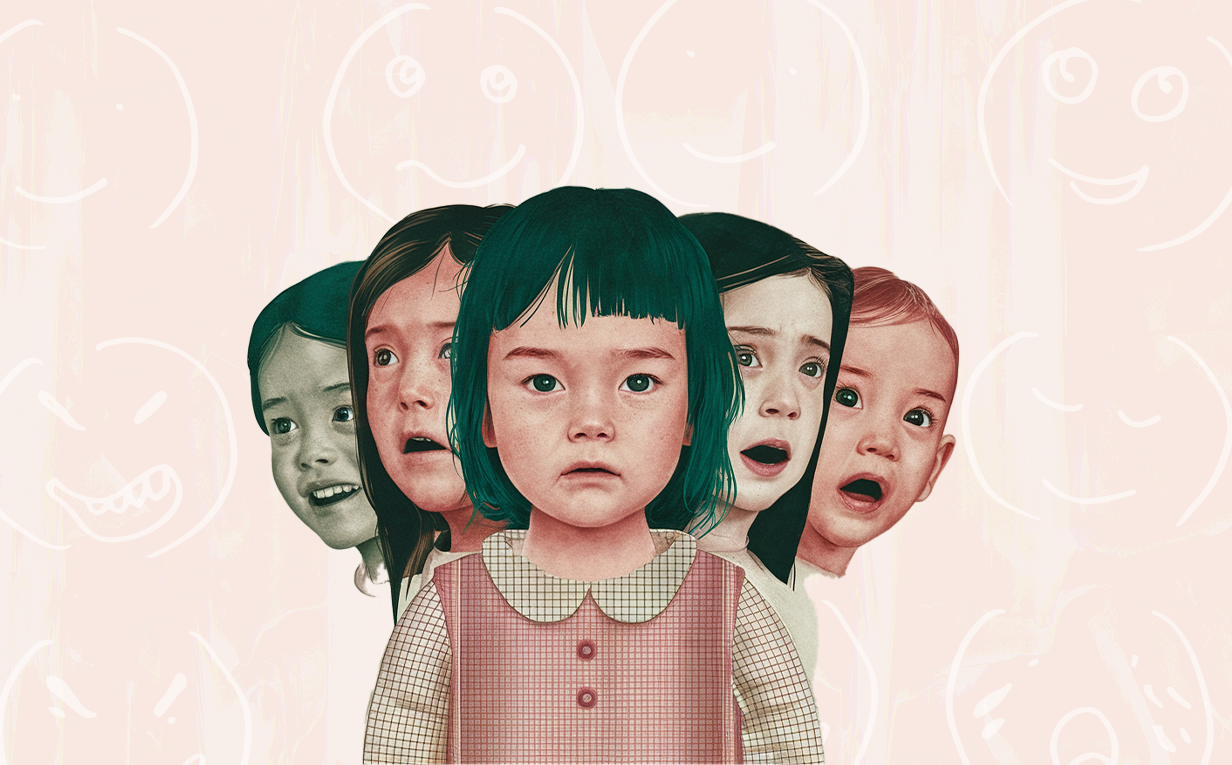
Decoding Your Feels:The Power of Emotional Intelligence in Early Development
It all starts with a cry. From the moment a baby enters the world, they’re expressing a whole range of emotions – joy, hunger, fear, frustration – all through nonverbal cues. How we respond to these early expressions lays the foundation for their emotional intelligence journey.
Think about it like this: imagine you’re a tiny human, brand new to this loud, confusing world. You hear a deafening crash (thanks, Mom, for dropping that pan!). Naturally, you’re scared! But then, a calming voice soothes you, gentle arms pick you up. Your caregiver says, « That must have scared you, that was a really loud noise.«
In that simple interaction, a lot of important things happen:
Emotional Expression: You, the baby, expressed your fear through crying.
Labeling: Your caregiver identified your emotion – scared.
Co-Regulation: By soothing you, your caregiver helped you regulate your emotions, bringing you back to a calm state.
This is the magic of early emotional intelligence development. It’s a beautiful dance between a child’s expression and a caregiver’s response.
Imagine being frustrated but not knowing how to say it. That’s what it’s like for little kids who can’t label their emotions.
By teaching them about feelings, you’re giving them the tools to:
Be superstars at expressing themselves ️
Become empathy ninjas
Ace those tricky social situations
Bounce back from tough times like nobody’s business
Basically, be awesome little humans who understand themselves and others!
Here’s why it matters so much:
Emotional fluency: Children who learn to label their emotions early on can express themselves more effectively. No more tantrums because they can’t say they’re frustrated!
Empathy Champs: Understanding their own emotions helps kids understand the emotions of others. They become more compassionate and caring little humans.
School Stars & Social Butterflies: Emotional intelligence is linked to better academic performance and stronger social skills. Kids who can manage their emotions are better at navigating friendships and classroom dynamics.
Fewer meltdowns, More Milestones: Learning healthy ways to cope with tough emotions reduces behavioral problems. Kids develop greater resilience, that bounce-back power that helps them overcome challenges.
Confidence Boost: When kids understand and manage their emotions, they feel more in control. This translates into a positive self-image and increased confidence.
That’s why I wanted to share this cool concept called Discrete Emotion Theory. Think of it as a secret decoder ring for feelings! This theory says there are actually just six core emotions, and all those other words are just different ways of describing how strong those core feelings are. Kind of like having different spice levels on your favorite dish!
Here’s the breakdown for you:
Happy: This is the sunshine and rainbows emotion. Your kiddo is feeling good, excited, and ready to take on the world!
Sad: This one’s a downer. They might be feeling blue, lonely, or like crying is the only option.
Angry: Uh oh, someone’s about to erupt! This is when frustration, annoyance, and maybe even a little rage take over.
Scared: Cue the spooky music! This emotion kicks in when they’re feeling nervous, afraid, or like something bad might happen.
Disgusted: Eww! This one makes them wanna wrinkle their nose and say « gross! »
Calm: This feeling is like taking a deep breath after a big game. You feel relaxed, peaceful, and maybe even a little sleepy. It’s like your mind and body are taking a break and getting ready for the next adventure!
Now, these five core emotions are like the building blocks. They can mix and match to create all sorts of different feelings. For example, maybe your child is feeling a little sad (because they missed a playdate) and a whole lot of angry (because their friend didn’t invite them). Totally normal!
The key thing is, helping them understand their emotions is like giving them a superpower. It helps them figure out what’s going on inside and how to deal with it in a healthy way. So next time your child seems overwhelmed, take a moment to decode their feels. Are they happy, sad, angry, scared, or disgusted? Once you know what’s up, you can help them express themselves and feel better.
P.S. Want a handy cheat sheet for all these emotions? We’ve got a free downloadable list that you and your kiddo can explore together! Available in two languages (Arabic and English )
But wait, there’s more! We all come pre-loaded with these emotions from the moment we’re born. It’s like having a built-in feeling factory! But here’s the thing: while babies can definitely feel happy, sad, angry, scared, and disgusted, they can’t exactly say, « Hey mom, I’m feeling frustrated because this toy won’t work! » That’s why those epic toddler tantrums happen so often. They haven’t yet learned to identify their emotions or how to communicate them in a healthy way.
This is where we, the awesome parents, come in! In those early years, most of what kids learn about emotions comes from watching us. We name their feelings for them (« Looks like you’re feeling frustrated, honey »), comfort them when they’re sad, and set boundaries when they’re angry. Over time, this emotional intelligence builds up, and they start to understand their own feelings and how to express them.
But some kiddos need a little extra help with this decoding process. They might struggle to identify their emotions or have trouble explaining them. For these cool cats, we can get a little more specific with our teaching. Think of it like learning math or reading – we can use social-emotional learning programs or fun activities to help them explore the world of feelings.


